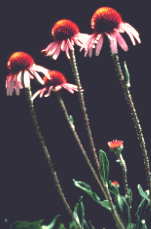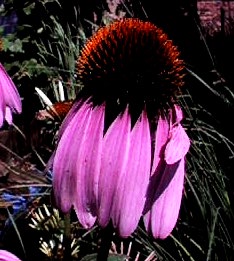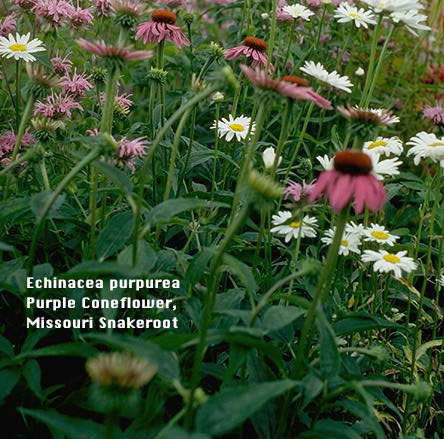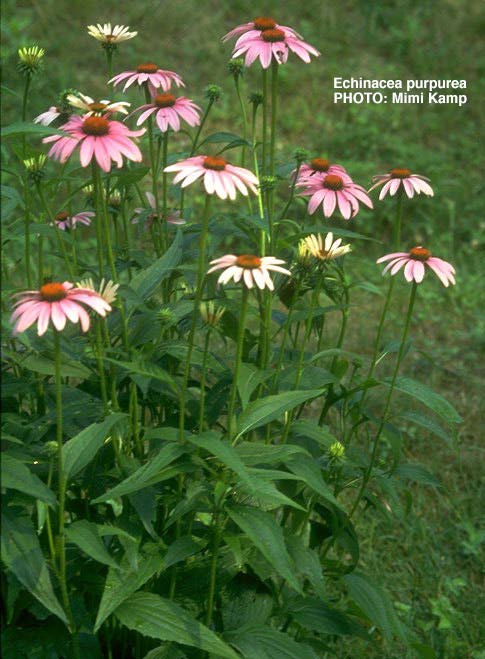
Purple Coneflower (Echinacea angustifolia)
The beginning of summer coincides quite well with the blooming of purple coneflower. This plant can be found throughout all but extreme northeastern North Dakota. The overall range of purple coneflower lies mostly within the band of grasslands that extends from Saskatchewan to Texas, at elevations up to 4,500 ft.
Purple coneflower is a rough, hairy perennial that stands up to 18 inches tall. The 1 to 3 flowering stems bear leaves only on the bottom half. Flower heads are up to three inches wide; the rounded central portion bears a hundred or more brown disc flowers, while from the periphery radiate about two dozen rose-purple ray flowers that are up to an inch long. Fruits are four-angled achenes about 1/4 inch long. The prickly central portion of the flower head persists throughout the winter.
Purple coneflower seems to prosper best on lightly and moderately grazed prairie in our area. The plant has a long history of medicinal use by the Kiowa, who chewed the ground roots and swallowed the juice to alleviate coughs and sore throats.
This plant is a member of the extremely large sunflower family (Asteraceae). Aster means "star" in Greek, in reference to the radiate arrangement of flowers in the heads. The generic name stems from the Greek echinos, "sea urchin," in allusion to the prickly persistent head. The specific epithet angustifolia means "narrow-leaved" in botanical Latin. Purple coneflower was first described for science in 1836 by the renowned Swiss-French botanist Augustine de Candolle. The de Candolle family is famous for its monumental, albeit unsuccessful, 102-year effort to write a worldwide flora.

Purple Cone Flower
Family: Composite
Size: 2 1/2 inch
Date: Mid June
![]()

![]()

![]()
![]()
Back to Plants
 Wildflower
Seed For Sale
Wildflower
Seed For Sale